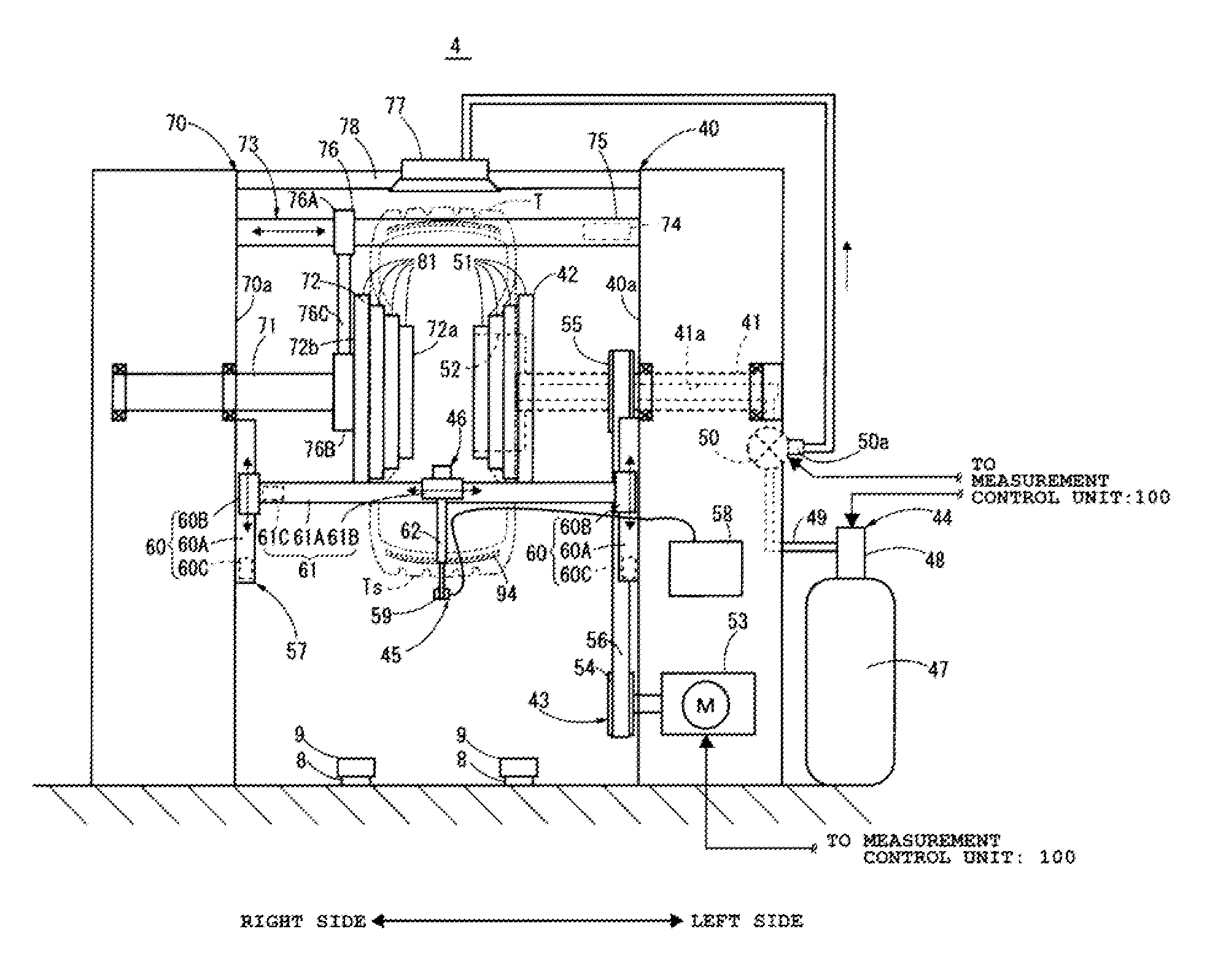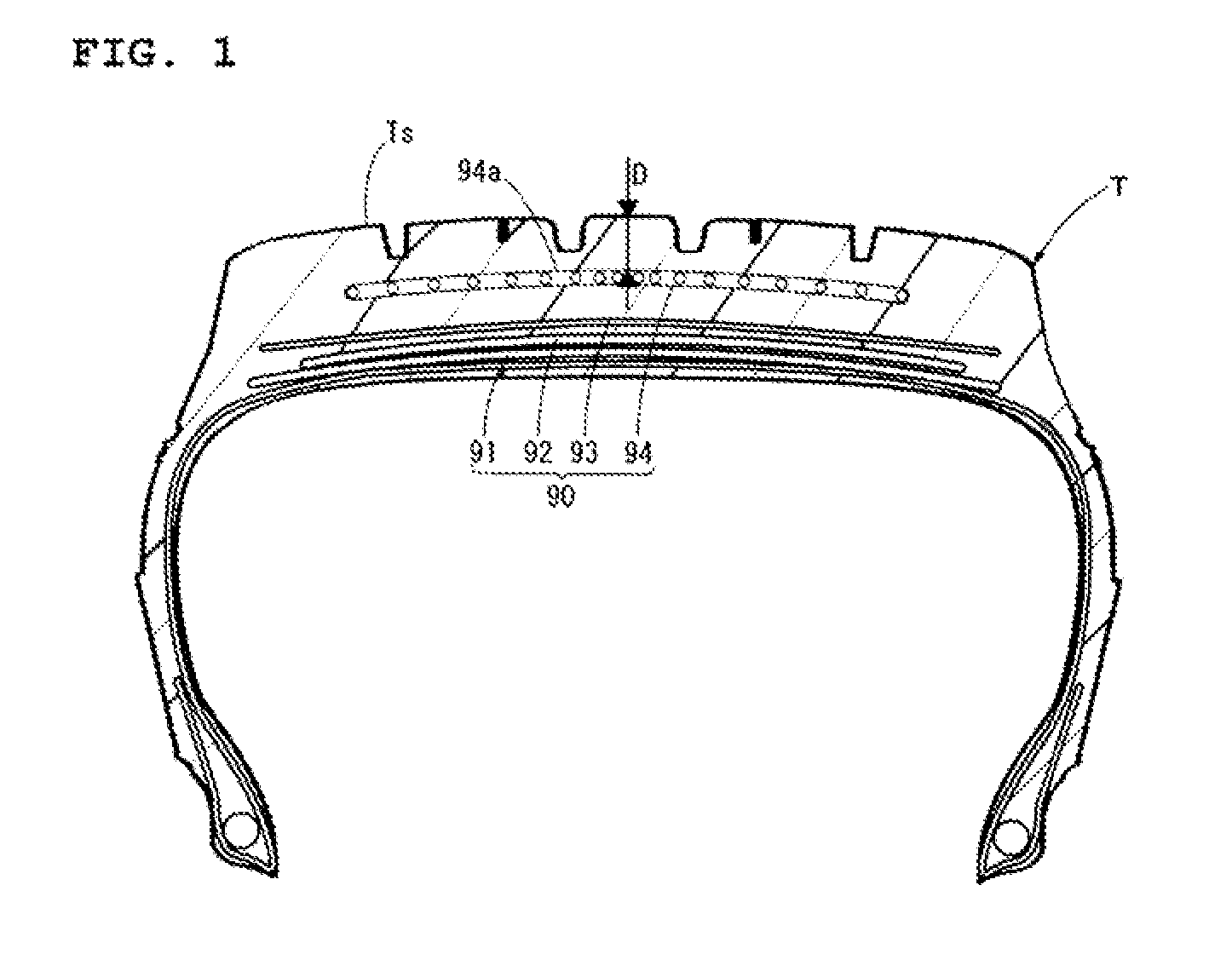Tread thickness measuring method
a technology of tread thickness and measuring method, which is applied in vehicle tyre testing, instruments, transportation and packaging, etc., can solve the problems of change in magnetic flux in the detection coil, and achieve the effect of reducing the work efficiency of tire retreading and increasing man-hours
- Summary
- Abstract
- Description
- Claims
- Application Information
AI Technical Summary
Benefits of technology
Problems solved by technology
Method used
Image
Examples
Embodiment Construction
[0027]FIG. 1 is a cross-sectional view of a tire T which is a sample under inspection. FIG. 2 is a structural illustration of a tread thickness measuring apparatus 1.
[0028]A description is first given of the structure of a tire T of which the tread thickness D is measured with a tread thickness measuring apparatus 1 according to the present invention. The tire T, which is a sample under inspection, is a used tire, for instance. And, as shown in FIG. 1, the tire T has a belt layer 90, consisting of a plurality of belts 91 to 94, in the tread region. The belt layer 90 is constituted by the belts 91 to 93, which are located in radially inner positions of the tire, and the belt 94, which is located in a radially outermost position of the tire. The belts 91 to 93 are steel belts made of steel cords, whereas the belt 94 is a fiber belt made of non-metallic fiber cords. The tread thickness D according to the present embodiment is the distance from the tread surface Ts to the belt surface 9...
PUM
 Login to View More
Login to View More Abstract
Description
Claims
Application Information
 Login to View More
Login to View More - R&D
- Intellectual Property
- Life Sciences
- Materials
- Tech Scout
- Unparalleled Data Quality
- Higher Quality Content
- 60% Fewer Hallucinations
Browse by: Latest US Patents, China's latest patents, Technical Efficacy Thesaurus, Application Domain, Technology Topic, Popular Technical Reports.
© 2025 PatSnap. All rights reserved.Legal|Privacy policy|Modern Slavery Act Transparency Statement|Sitemap|About US| Contact US: help@patsnap.com



